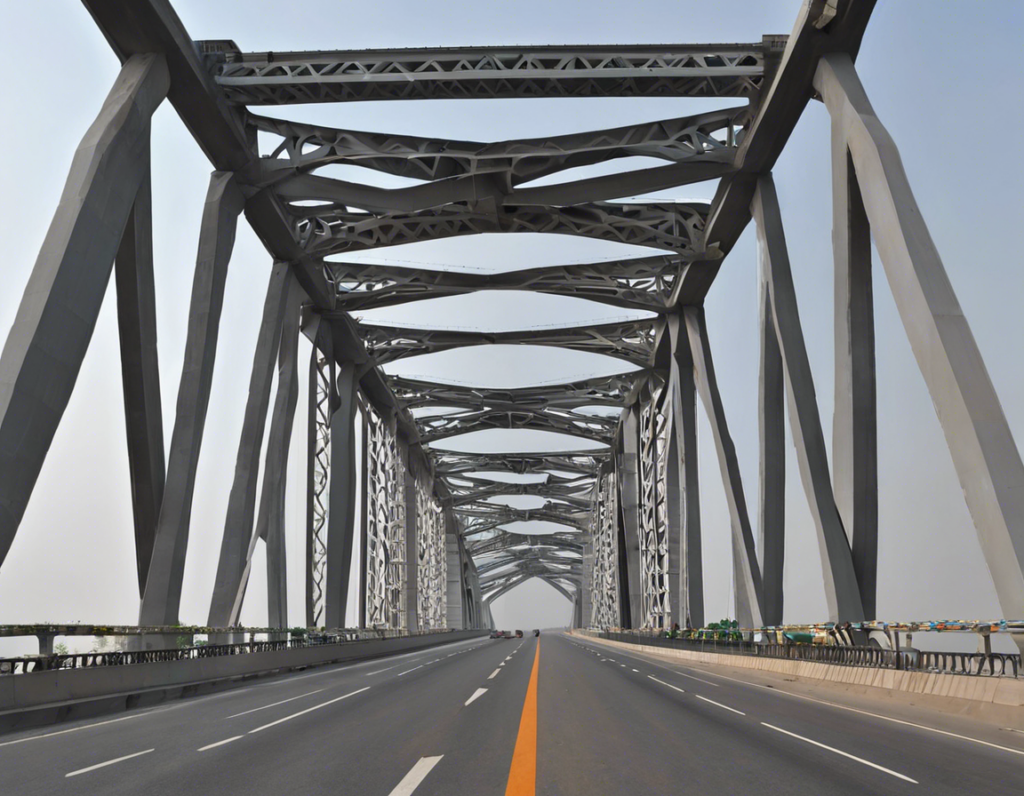Introduction
Atal Bridge, a stunning architectural marvel located in the Himalayan region of India, stands tall as a symbol of engineering brilliance and innovation. This bridge is not just a means of crossing a river but represents an intersection of art, science, and nature. In this article, we will delve deep into the features, construction, significance, and impact of the Atal Bridge.
History and Background
Named after the former Prime Minister of India, Atal Bihari Vajpayee, the Atal Bridge is a testament to his vision of connecting the remote regions of the country with robust infrastructure. The bridge serves as a vital link between two regions that were previously separated by the river, significantly reducing travel time and enhancing connectivity.
Key Features
– Location: The Atal Bridge is located at an elevation of over 10,000 feet, making it one of the highest bridges in the world.
– Length: Spanning across the river for over X meters, the bridge is a marvel of modern engineering.
– Construction Material: The bridge is predominantly made of steel and concrete, ensuring durability and strength.
– Architecture: The unique design of the bridge not only ensures structural integrity but also adds to its aesthetic appeal.
– Challenges: The construction of the Atal Bridge posed several challenges due to the harsh terrain and extreme weather conditions, making it a remarkable engineering feat.
Construction
The construction of the Atal Bridge involved meticulous planning, state-of-the-art technology, and skilled labor. Engineers and architects worked tirelessly to overcome the challenges posed by the rugged landscape and harsh climate. The use of advanced construction techniques and materials ensured that the bridge could withstand the seismic activity in the region.
Significance
The Atal Bridge serves as a lifeline for the communities living on either side of the river. It has not only facilitated easier access to essential services but has also boosted trade and tourism in the region. The bridge stands as a symbol of progress and development, showcasing the commitment of the government towards infrastructure development in remote areas.
Impact
Since its inauguration, the Atal Bridge has had a profound impact on the socio-economic landscape of the region. The improved connectivity has led to enhanced access to education, healthcare, and markets for the local population. It has also opened up new avenues for economic growth and development, transforming the lives of the people in the region.
Future Prospects
As we look to the future, the Atal Bridge continues to inspire awe and admiration for its architectural grandeur and engineering excellence. It serves as a reminder of what human ingenuity can achieve in the face of seemingly insurmountable challenges. The bridge stands as a beacon of hope and progress, connecting people and communities in ways that were once thought impossible.
Frequently Asked Questions about Atal Bridge
-
Q: Where is the Atal Bridge located?
A: The Atal Bridge is located in the Himalayan region of India, at an elevation of over 10,000 feet. -
Q: What is the significance of the Atal Bridge?
A: The Atal Bridge serves as a vital link between two regions, enhancing connectivity and fostering economic growth. -
Q: Who is the Atal Bridge named after?
A: The bridge is named after the former Prime Minister of India, Atal Bihari Vajpayee, in recognition of his vision for infrastructure development. -
Q: What challenges were faced during the construction of the Atal Bridge?
A: The construction of the bridge posed challenges due to the rugged terrain, extreme weather conditions, and seismic activity in the region. -
Q: How has the Atal Bridge impacted the local communities?
A: The bridge has improved access to essential services, boosted trade and tourism, and catalyzed economic development in the region.
In conclusion, the Atal Bridge stands as a shining example of human innovation and determination. It not only represents a physical connection between two points but also symbolizes the spirit of progress and development. As we marvel at its architectural splendor, let us also appreciate the countless hours of labor and expertise that went into making this engineering masterpiece a reality.
